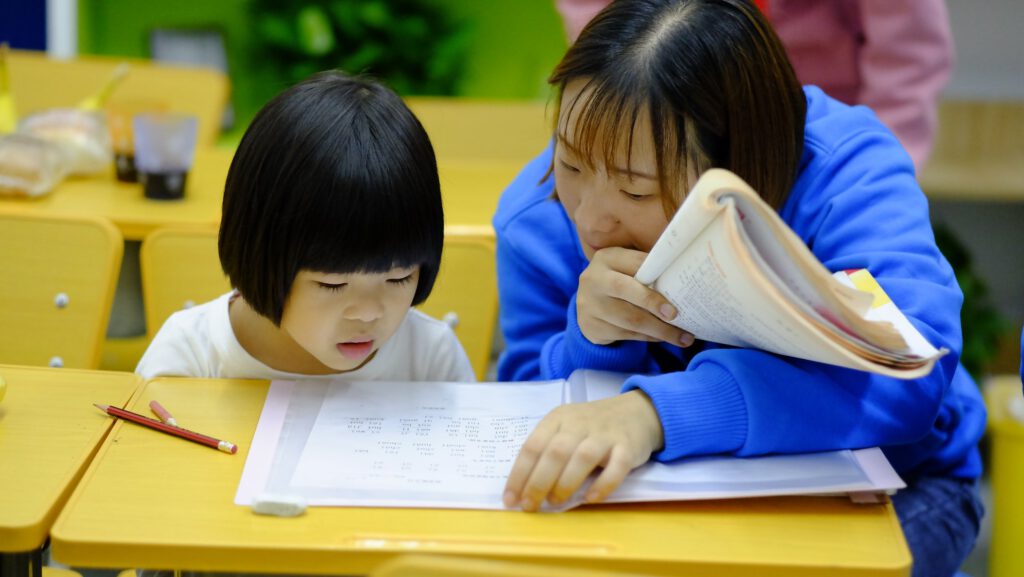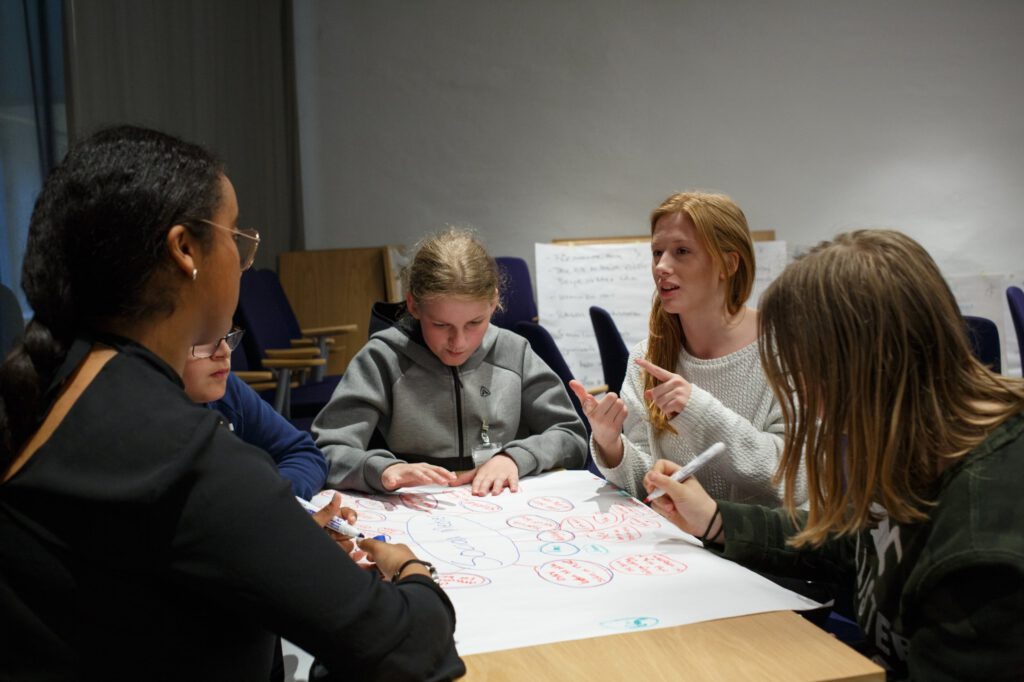Feedback Strategies that Promote Learning
A key ingredient of successful student learning is timely, specific, and relevant feedback. Teachers who are “student watchers” are able to give the most impactful feedback to help learners grow target dispositions, skills, knowledge, and understanding. Small shifts in the way teachers give feedback can have large impacts. This blog post will give insights on the language of feedback, explore three aspects of feedback, and provide an outline to use while delivering feedback. Let’s dive into the world of feedback!
The Language of Feedback
Teacher language, particularly in the feedback they provide, helps set the tone of a classroom. When giving feedback, teachers must consider their word choice and syntax as they seek to promote student success. One way to approach the language of feedback is to be a warm demander, a term first coined by Judith Kleinfield in 1975. To be a warm demander means to exude personal warmth towards students while holding them to high expectations for learning.
This concept was brought back to the forefront in Zaretta Hammond’s 2014 book Culturally Responsive Teaching and the Brain: “Your job is to find a way to bring the student into the zone of proximal development while in a state of relaxed alertness so that he experiences the appropriate cognitive challenge that will stimulate his neurons and help his dendrites to grow.” To learn strategies for becoming a warm demander, have a look at this chart.
Strategy: Use a neutral and objective tone without passing judgement of good or bad in your feedback on students’ work; comment on the task and not the learner.
Components of Feedback
There are three aspects of feedback which combine to create an effective recipe for student success. With the right tone in mind, incorporate these three aspects of feedback:
-
Feed up: Set the purpose of feedback.
-
Feedback: Provide information on the success and/or need based on evidence in student work.
-
Feed forward: Indicate next steps for student success.
When students have access to each of these elements of effective feedback, their learning and growth will skyrocket! Educational researcher John Hattie found through his meta-research that feedback of this nature can have an effect size of 0.70 which can lead to more than a year’s growth within a single school year.
Strategy: Set the purpose, characterize how successfully the task was completed within the work sample, and indicate next steps in your feedback to students.
Building strong relationships with students is essential for feedback practices to be successful. With a foundation of trust and understanding with students, teachers can become warm demanders in the classroom. The Reading and Writing Project out of Columbia University offers an outline of how to approach relationship building. (As you read these steps, can you identify the three aspects of feedback mentioned above, namely feed up, feedback, and feed forward?) When providing feedback in a one-on-one conference with a student, try using these steps over a period of five to seven minutes:
-
Research: Listen to the student tell you about their learning.
-
Acknowledge: Build on the assets or strengths the student demonstrates.
-
Analyze: Decide what and how to teach.
-
Teach: Use modeling, guided practice, or inquiry to fill any gaps.
-
Link: Link to the rest of the work or bigger picture learning.
-
Move Forward: Send the student off to put the learning into action.
Making time to give this type of feedback takes planning and intentionality. Moreover, teachers reduce their talk time and design a classroom culture where students are independent learners. This gives teachers time to meet in small groups or individually with students while also giving students time to try out the knowledge, skills, and understanding.
Strategy: Set aside time to meet with each student individually for five to seven minutes to provide concise and specific feedback following the cycle of feedback above.
Implementation of Feedback
To ensure that feedback given to students is received effectively, teachers must engage in follow-up actions that allow for reflection and implementation. Students must have dedicated time to engage with and use feedback. Teachers should therefore provide students with time to implement feedback, make mistakes, and reflect as they become active participants in the learning process.
While students work to actively apply the feedback they receive, teachers have space to ask open-ended questions based on the feedback they provide: “What are you working on?” “What are you thinking about?” “What are you proud of?” “What will you try next?” “What is working well for you?” These questions promote metacognitive thinking which inspires students to consider how they learn best and what their needs are. These elements help ensure that the feedback is received in such a way that students can incorporate it into their learning and apply it to future learning.
Strategy: Be a reflective practitioner by looking for signs of the impact feedback is having on learning and reflecting on how feedback is received by students.
Next Steps
As you prepare to apply your learning from this blog post in your own classroom, analyze the following two videos of teachers giving feedback through the lens of the strategies presented in this post. Identify the language used, the components of feedback, and how the feedback was implemented by students as you consider the potential impact on student learning:
Reflect on your practice given the strategies presented in this post as well as the sample videos of effective feedback. Even small shifts in our approach to providing student feedback can have large impacts on classroom culture and student achievement. To learn more about best practices in effective feedback, enroll in Moreland University’s TEACH-NOW Teacher Preparation Certificate Program!



